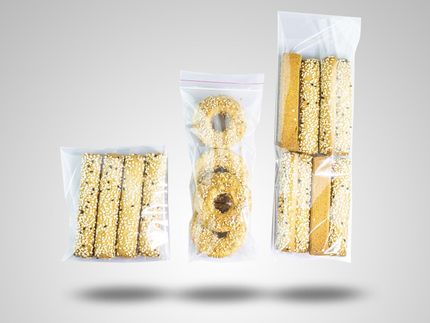Platiciser DEHP is ingested mainly through food
BfR and UBA jointly investing DEHP contamination in the population
Advertisement
food constitutes an important exposure path of the plasticiser DEHP. The substance, which makes plastics flexible, has been found in the environment and in human urine. This is undesirable as the substance has a damaging effect on the reproductive organs which can impair the fertility and development of unborn children. DEHP may not be used in toys or cosmetics for this reason. Overall, the quantity ingested by almost all people is small and therefore a health risk does usually not exist . In the worst case, small children can have higher levels of exposure because they not only ingest DEHP through their food but also through housedust on floors and other objects they put in their mouths. Even then, intake quantities are still low in most cases. It cannot be excluded, however, that the intake quantities tolerable for health are exceeded by a small percentage of the population. These results we re produced in a new study by the Federal Institute for Risk Assessment (BfR) commissioned by the Federal Environment Agency (UBA). On the basis of the latest food consumption data and DEHP levels measured in foods and consumer products, it was examined how high the intake of DEHP can be. The results match up well with previous measurements of DEHP metabolites in the human body.
DEHP is the abbreviation for di(2-ethylhexyl) phthalate, one of the most commonly used softeners which keeps plastic products made of PVC soft and supple. Like several other phthalates too, DEHP was classified by the European Union as toxic for reproduction, which means that there are sufficient reasons to assume that due to its hormone-like effect, DEHP can influence human fertility or have adverse effects on the development of unborn children.
Adolescents and adults ingest DEHP mainly via their food. The intake quantity for the vast majority of consumers is usually so small, however, that no health risk exists. On average, the values lie below the quantity which a person can take every day of life without health risks. In addition to this, DEHP and it’s metabolites are eliminated quickly from the body. The European Food Safety Authority (EFSA) has established a daily quantity of DEHP of maximum 50 micrograms per kilogram of body weight which can be ingested every day of a person’s life (Tolerable Daily Intake, TDI) without any health-damaging effects. When consuming food, adolescents and adults in Germany currently ingest an average dose of 13 - 21 micrograms of DEHP per kilogram of body weight. In the worst case, however, the TDI value can also be exceeded at times if foods with permanently very high DEHP concentrations are consumed, according to estimates made by the BfR in roughly one percent of consumers.
Which foods contain DEHP? All staple foods such as meat, fat, cereals, fruit, vegetables, milk and dairy products can be contaminated with the chemical. Compared to unpacked, unprocessed foods, fatty condiments such as mayonnaise and oily convenience products, such as vegetables and fish in jars and oily canned goods showed considerably higher DEHP values among the products included in this study. Foods can absorb DEHP and other plasticisers especially during processing or from their packaging. This is why the use of DEHP as a softener in the packaging of fatty foods was banned in 2007. From 2015, DEHP may no longer be used for the manufacture of consumer products without approval within the scope of the EU chemicals regulation REACH. As the substance is widespread in the environment, however, it cannot be excluded that traces of it can be found in foods.
Children ingest roughly half of the DEHP intake with their food. Other entry sources are household dust, consumer products and toys. This applies in particular to children who spend a lot of time on the floor. This can cause their DEHP intake to be higher than with adolescents or adults. In this study, mean overall exposure for children was estimated to be an intake quantity of 15 - 44 micrograms per kilogram of body weight per day. This average intake quantity is below the TDI value.
The intake of DEHP in everyday life can be reduced by a few simple consumption and hygiene measures. These include preparing fresh food more often, using fewer convenience foods and changing brands more often, because the same foods can contain different quantities of DEHP depending on their origin. Additionally it is recommended to clean floors and carpets more often. It is important that to the extent possible, small children only put things in their mouth that are intended for this purpose. Although the substance has been banned in toys and children’s articles since 1999, it is occasionally detected in products of this kind as reports of the European rapid alert system RAPEX show. Older toys put on the market before the ban can also contain DEHP.





























































